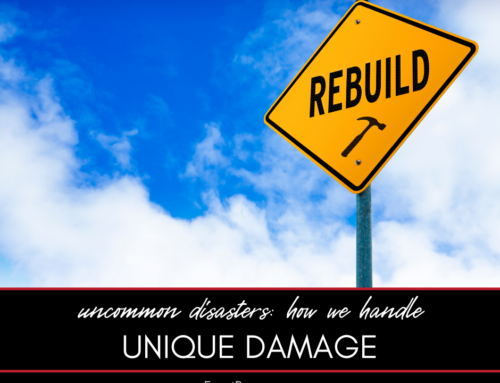If you’re returning home to assess tornado damage to your property consider the following recommendations we’ve summarized from the Red Cross.
Lookout for sagging ceilings. If you see that a portion of the ceiling inside your home is sagging it means it got wet, making it heavy and dangerous. It will need to be replaced. You might attempt to knock it down yourself, but be mindful to wear eye protection, as well as a hard hat. Stand away as much as possible from the damaged area and use a long stick to poke holes into the ceiling—starting around the outside of the bulge—to allow any remaining water to drain out. (If you hit the center of the damaged area it may cause a large portion of your ceiling to collapse).
Avoid sagging portions of your floor. If you notice that large parts of your floor are sagging it’s possible that they could collapse beneath your weight. You should avoid those areas. If there are small sections of your floor that sag you can try to bridge them by using thick plywood panels, or thick boards, that extend a minimum of 8 to 12 inches beyond either side of the sagging sections.
Never use an open flame as a light source. If your power is out you should use a flashlight to navigate throughout your home. Don’t attempt to use any kind of open flame, including candles, to check your residence for damage or to act as an alternate source of light. If there is an undetected gas leak you could put your life, and the lives of many others, in serious danger.
Air out your home. If the weather in your area is dry during your visit, you should open your windows and doors to air out or dry your home.
Be sure to take photographs of the damage to your home since you may need them to validate insurance claims later. If you perform any temporary repairs around the house, like bracing walls, covering over holes, or removing debris, you should save all of your receipts.









